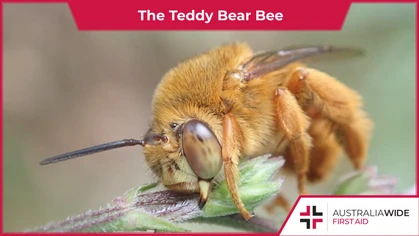Common Household Bugs in Australia

Bites and Stings
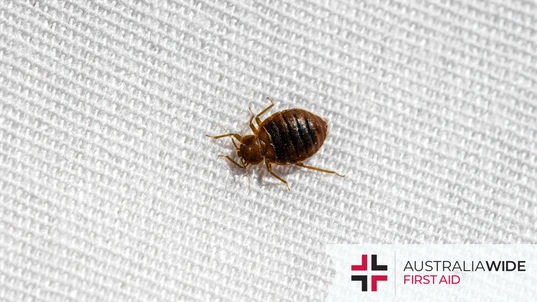
In Australian households, there are a variety of bugs and other pests that can cause significant damage to your health, finances, and overall wellbeing. It this article, we will acquaint you with 4 common pests in Australian households and how to prevent their population numbers from exploding. (Pictured: A pesky bedbug)
It is no surprise that with Australia’s prolific list of dangerous creatures, there are many bugs and rodents that make their way into homes. Whether these pests have a venomous bite, allergy-inducing pheromones or a craving to gnaw your home's electrical wiring, they can be detrimental to your health, finances, and overall wellbeing. In this article, we will explore some of the most common bugs and other pests found in Australian households, including identifying and preventing infestations. For more hands-on experience with insect bites and other first aid situations, enrol in a general or childcare first aid course near you: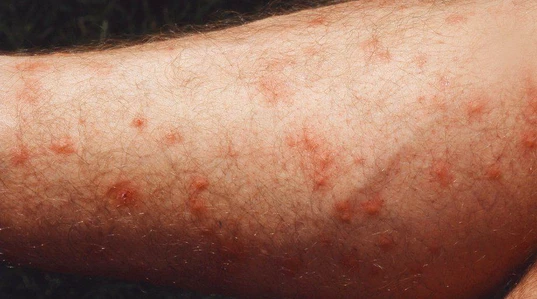
Bedbug bites generally cause itchiness and inflammation, which can be relieved with cold compresses and over-the-counter steroid creams.
Bed Bugs
One of the most difficult pests to remove from your home are bed bugs. These small, brown, flat insects find their way into your home to feed on your blood and the blood of your family members and pets. These nocturnal insects are active at night, and throughout the day they will hide in areas with minimal light, such as your mattress, furniture and the cracks and crevices of your home. The first sign of a bed bug infestation is you or other members of your household waking up with bites. As the infestation worsens, you may also see the bed bugs in your sheets and on your mattress or furniture. If you cannot see the bugs themselves, blood stains from crushed bugs or brown spots from the bug’s faeces can also indicate an infestation. As bed bugs use pheromones to communicate, you may also notice a distinctive, sweet, musty odour if the infestation is severe. Bed bugs are harmful to humans as they bite and feed on blood to survive. These bites result in red, itchy spots that can become infected. Their presence in your home can also trigger allergies and asthma if the infestation is sufficiently severe. Bed bugs are difficult to remove from your house, so it is important to prevent an infestation from occurring. This can be achieved by maintaining a high level of cleanliness. This should include:- Regularly washing, vacuuming, or cleaning bedding, furniture, and surfaces
- Use hot water (60°C) to wash clothes and sheets and a dryer to dry them
- Avoid using second-hand mattresses and check for bed bugs if you buy one
Mice and Rats
Unlike native rodents that pose no threat to your health, introduced species of mice and rats will infest homes and agricultural areas. The common species of introduced rodents are:- Black Rat (Rattus rattus)
- Brown Rat (Rattus norvegicus)
- House Mouse (Mus musculus)
- Finding black droppings
- Signs of gnawing on fruits and vegetables
- Pet food going missing
- Greasy rub marks on walls and skirting boards that shows common travel paths
- Leptospirosis
- Lymphocytic Choriomeningitis Virus (LCMV) Infection
- Rat Bite Fever
- Salmonellosis, Campylobacteriosis and other Gastrointestinal Infection
- Properly dispose of food scraps and do not compost animal products
- Regularly empty bins and have bins with tight-fitting lids
- Regularly clean your home and inspect for signs of a rodent infestation
- Only leave out enough pet food for your pet to eat immediately
- Clean out sheds, gardens, and storage areas
- Block access to food and food preparation areas
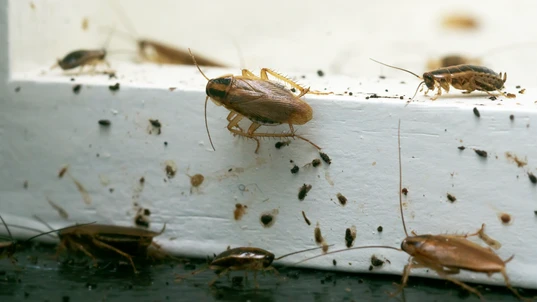
German cockroaches (pictured) are common in Australian households. They are prolific breeders and like to hide in the dark, humid corners of kitchens and bathrooms.
Cockroaches
Cockroaches are a common household pest that have a brown oval body, six legs, antennae, and wings. They prefer to live in warm and moist environments where they have access to food and water. They are nocturnal insects, typically only becoming active at night, which can make them hard to spot. Some of the signs that cockroaches are in your home include:- Seeing live cockroaches, especially during the day, as this can indicate a larger infestation
- Droppings and smears around the home
- Finding skin sheds or small, brown eggs
- Musty, oily, or unusual smells
- New allergy symptoms or asthma problems
- Keep your home clean and free of clutter
- Fix any leaks or moisture problems in your home
- Ensure any spills or puddles are mopped up
- Store food in sealed containers and clean up crumbs
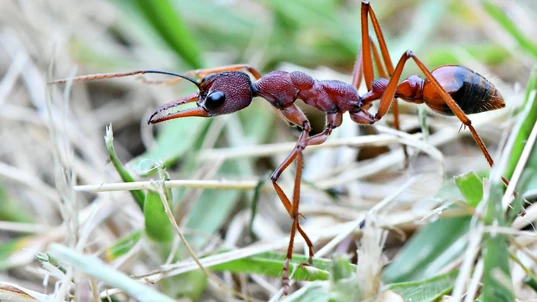
Ants venture into households in search of food, water, and nesting habitats.
Ants
Found on every continent except Antarctica, ants are common household insects that prefer a wide range of environments. Common species of ants that infest homes in Australia are Coastal Brown Ants, Fire Ants, Carpenter Ants, and Black House Ants. Outdoors, ants are commonly found in anthills or trees whilst inside, they create nests in walls, mouldings, and countertops. The most common sign of an infestation is seeing many ants in a specific area or around food. Ant trails show ants moving back and forth from their nest to an available food source. They can also be detected by small piles of dirt or sand around the entrance to their nest. An infestation can be problematic for several reasons. Firstly, they are known to bite when they are threatened, which is not only uncomfortable but can cause an allergic reaction that can be fatal in some cases. Some species, such as the Carpenter Ant, can also cause structural damage to your home by burrowing through the wood. To prevent an infestation:- Keep your home clean and free of food crumbs and spills
- Seal cracks and openings through which ants can enter
- Remove outdoor sources of water and trim back trees and shrubs that contact your home’s exterior
Final Thoughts
By identifying common household pests in Australia early on and implementing effective prevention measures, you can save yourself the hassle, expense, and health implications of dealing with a full-blown infestation. Simple steps like keeping a clean home, sealing entry points, and properly storing food can go a long way in keeping pests at bay. In cases where prevention is no longer an option, it's important to act quickly and seek professional help to mitigate the problem. With a bit of knowledge and proactive effort, you can successfully keep your home pest free. To learn first aid for insect bites and other first aid situations, enrol in a general or childcare first aid course near you:
Originally published at
https://www.australiawidefirstaid.com.au/resources/common-household-bugs-australia
as part of the Australia Wide First Aid Articles Library






